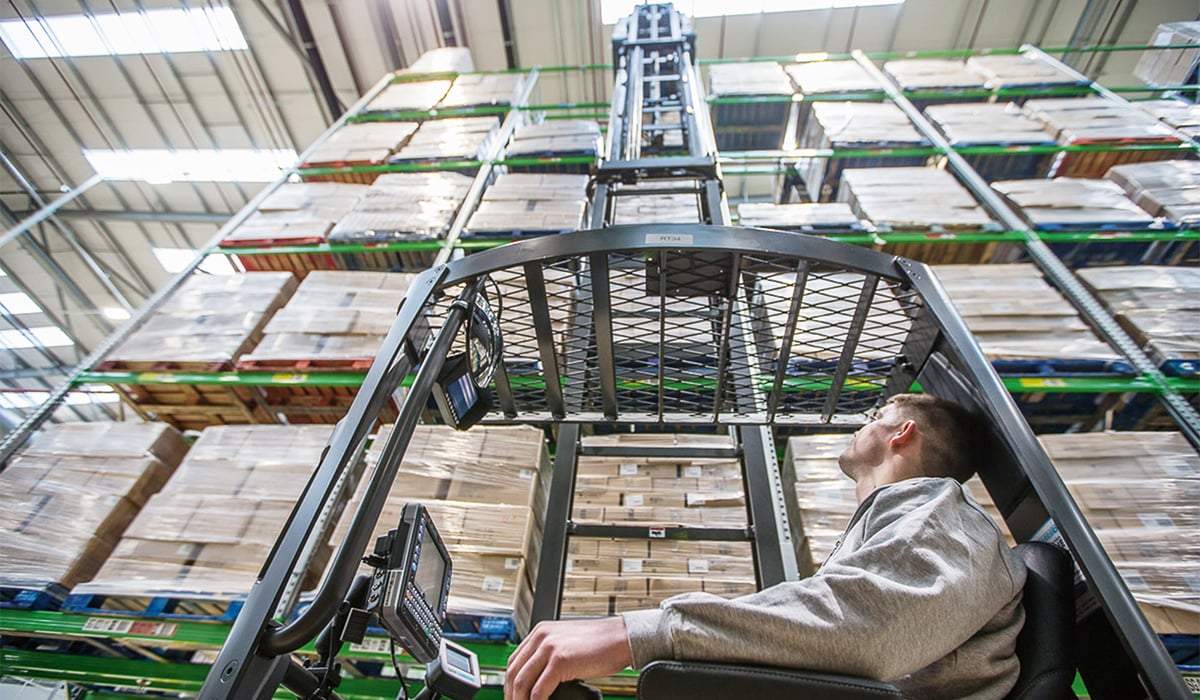
Even the most well-constructed, stable reach truck will experience mast tilt when stacking at high heights. When you're lifting hundreds of kilograms many metres off the ground, it's impossible to avoid the mast tilting and swaying back and forth when it reaches the correct height.
However, this sway slows down the whole operation. When the reach truck driver lifts the load to the rack, they have to wait for the mast to stabilise before extending it and placing down the pallet in the rack. Otherwise, there's a risk that they could end up placing the load incorrectly, which can be dangerous.
This pause may only last a few seconds, so in the overall process of stacking, it doesn't seem like a big deal. However, when repeated many times a day across a whole fleet, it really adds up. If a driver in a busy warehouse lifts up or takes down 160 pallets per shift, the time spent waiting for the mast to stop swaying adds up to a long period of wasted time.
Like all things in materials handling, such as order picking or loading and unloading, making small changes to short, repetitive procedures can save significant time and money. In this case, newer types of reach truck are often equipped with systems to control and reduce mast sway, such as the Mast Tilt Control (MTC) system on UniCarriers TERGO reach trucks.
If a system like this can reduce the sway time by just five seconds with each lift, it saves nearly 15 minutes a shift based on the number of pallets mentioned above. If the warehouse has a number of other reach truck drivers doing the same thing, day after day for long periods, this adds up to hundreds of hours which can be saved. If you could make this kind of saving in your operation, how would you invest the extra time?
These kinds of systems can lead to much quicker stabilisation - up to 80% quicker in some cases. This saves a lot of time that would otherwise be wasted, and allows cycle times to be reduced. This gives warehouse managers more time to do the job with the resources they already have.
If you're interested in learning more about how money can be saved in this way, click the button below to get our free guide, The biggest cost of owning a forklift truck. Your drivers are the most expensive part of your operation, so any way to use their time more effectively will bring big benefits.







































Comment